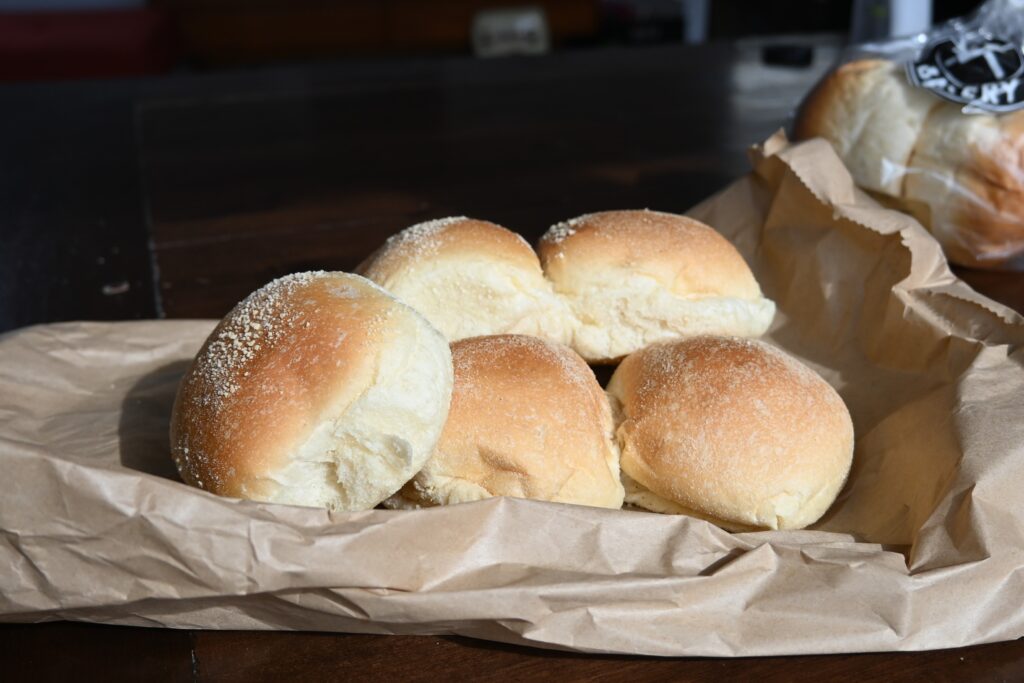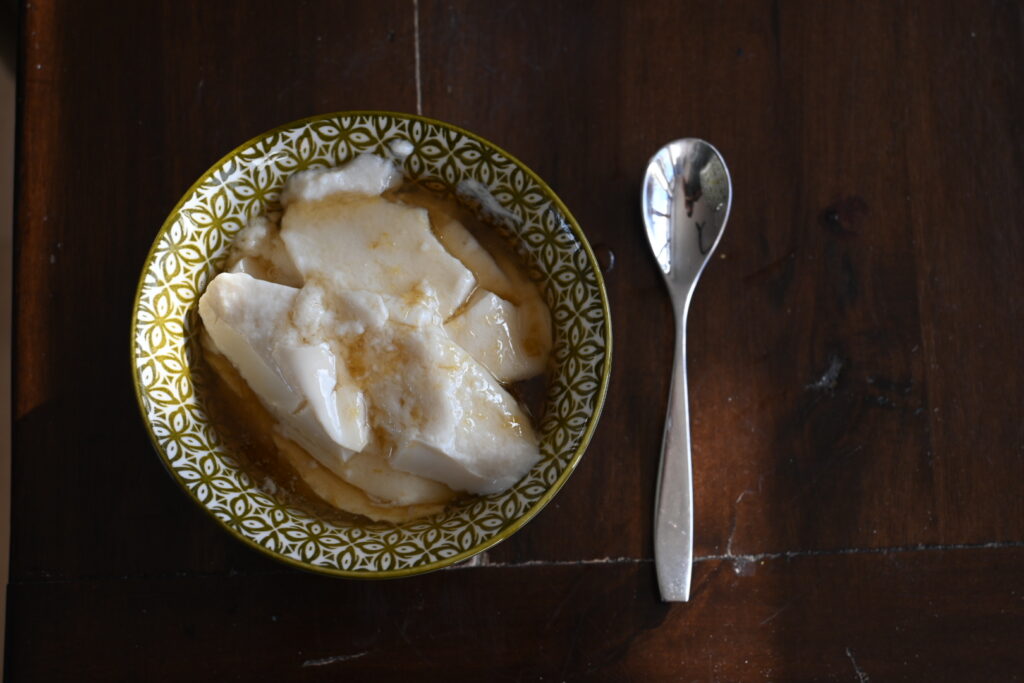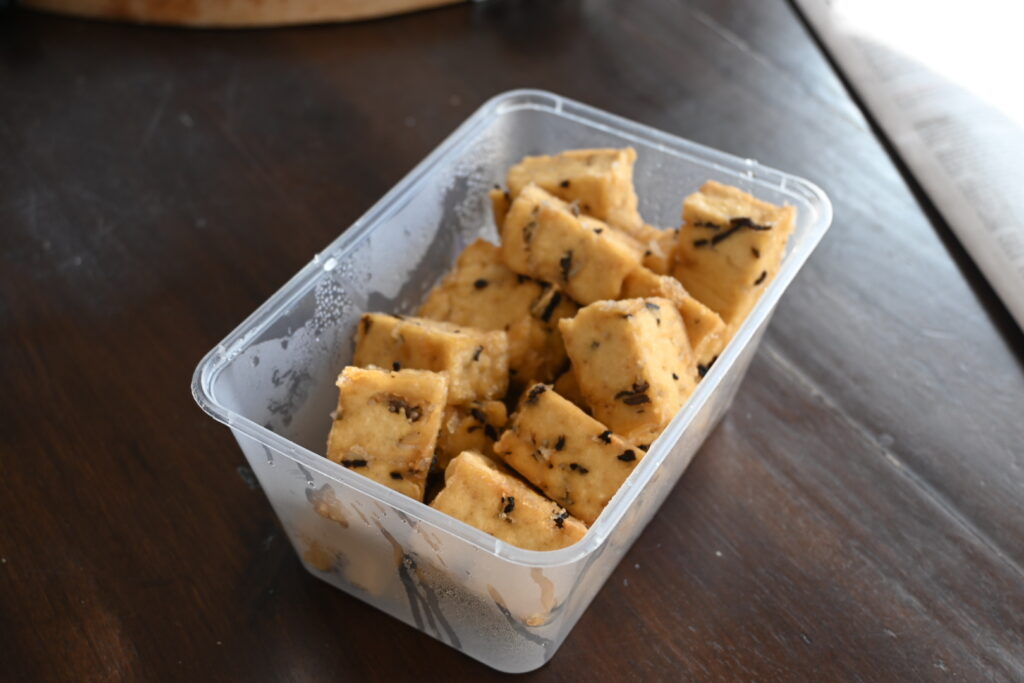Here’s my very quick reference on where to eat lunch. There’s a very big bias towards the Southern Cross end of the city because that’s where my work is.
Post Category → Location
Great carbs of the Western Suburbs: Pandesal

The history of the colonisation of Asia is written in its bread. Pandesal, the national breakfast bread of the Philippines, was borne of Spanish colonial rule but processed by the USA. The bread came from the more Spanish pan de suelo, crusty “bread of the floor” cooked on the clay base of the oven from the 1600s, but as M. Paramita Lin writes:
Pan de suelo is likely the precursor to pandesal, which didn’t come about until the American colonial era; Americans objected to eating bread cooked on the oven floors and thus pandesal, baked on metal trays, was born. But even then, it didn’t look like the rolls that are sold now. (Food historian) Sta. Maria quoted Alice Fuller, who wrote Housekeeping: a Textbook for Girls in Public Intermediate Schools in the Philippines, writing in 1911 that pandesal was “[a] small oval-shaped loaf of bread very common in the Philippines. Prepared much the same as ordinary bread, but baked much harder. The loaf, when baked, is 9 to 15 centimeters long, 7 to 9 centimeters wide, and about 4 to 6 centimeters thick. Prior to baking the loaf is gashed longitudinally on top so that the baked loaf may be easily broken into halves.”
Over time, pandesal has moved from a loaf to a smaller, sweeter bun but more than 90% of the Philippines milling wheat imports still come from its more recent colonizer, the USA.
Outside of the western suburbs, there aren’t many other Filipino panaderia in Melbourne. There are two in Braybrook (Masarap and just around the corner, Papabear Bakehouse) and one in St Albans, (Manila’s Bread Bakery). Papabear is better for Filipino sweets and cakes, Masarap which has been in the small Churchill St shopping strip for about 20 years is more focused on yeasty provisions which they sell from the shopfront and distribute to other grocers around Melbourne.
Masarap is Tagalog for delicious. Their pandesal is delicious. They sell enough of it that it is warm whenever you get there, and generally, never on display in the front. The outside of the buns is rolled in breadcrumbs, a reminder that pandesal cannot exist without bread already existing before, inside is pillowy. It’s a sweet-savoury carb hit.
Masarap Bakery
178 Churchill Ave, Braybrook VIC 3019
Soyfoo Anh Long, Braybrook

Soyfoo Anh Long is a tofu shop on the vertiginous northern edge of Braybrook that drops into the Maribyrnong river valley, amongst the wrecking yards that advertise on hastily scrawled “Cash For Cars” signs stapled to a power pole. Their precast concrete panel factory was once neighboured by a business called “Hair Extension Online” who never seemed to be open to extend hair or have ever been in any way online.
This is the ne plus ultra of Melbourne Western suburbs food locations, if you ever want to weaponize a flawed sense of authenticity. Or you could just order it on doordash, like normal people. Treating anywhere like a “hidden treasure” ignores the economic reality of running a food business: cheap factory space will always be in the margins. You can find it by googling “soy near me”.
I ride my bike past it most days. It’s the end of the 20km loop that I ride than ends at the Lacy Street wall; a series of 11% gradient switchbacks that wind out of Cranwell Park. I try to climb it fast enough that I can’t talk afterwards. I roll past Soyfoo Anh Long in no state to eat tofu. I took today off.
They make: firm tofu (plain, fried in different convenient cuts, mushroom and vermicelli, lemongrass and chilli), soy milk and tau foo fah/đậu hũ đường, the refreshing silken tofu pudding dressed in a simple ginger syrup (above). The shop also fills its fridges with mock meats, has a selection of dry Vietnamese noodles and primarily vegetarian sauces.

The biggest payoff of getting to the factory in person is freshness. The fried mushroom and vermicelli tofu is warm from the fryer whenever you arrive, the strips of black wood ear fungus and noodle in it are the best textural counterpoint to the crispy exterior. You can just eat it straight or toss through sichuan pepper, salt and chili when you get home for more of a kick.

Location
Soyfoo Anh Long
24 Cranwell St
Braybrook VIC
Tofu is also stocked at many western suburbs grocers.
Footscray Market Opening Hours – Christmas 2015
I’ve now been blogging for 10 years. In that entire time the Footscray Market, one of Melbourne’s biggest wet markets, has never published their Christmas opening hours online. This post marks the 7th year of my Christmas vigil to celebrate it.
Here are the opening hours as published on a photocopy on the door:
| Day | Hours |
|---|---|
| Tuesday, 22 December 2015 | 7:00AM-6:00PM |
| Wednesday, 23 December 2015 | 7:00AM-6:00PM |
| Thursday, 24 December 2015 | 7:00AM-6:00PM |
| Friday, 25 December 2015 | CLOSED |
| Saturday, 26 December 2015 | CLOSED |
| Sunday, 27 December 2015 | CLOSED |
| Monday, 28 December 2015 | CLOSED |
| Tuesday, 29 December 2015 | 7:00AM-4:00PM |
| Wednesday, 30 December 2015 | 7:00AM-4:00PM |
| Thursday, 31 December 2015 | 7:00AM-6:00PM |
| Friday, 1 January 2016 | CLOSED |
| Saturday, 2 January 2016 | 7:00AM-5:00PM |
As for the regular Footscray Market trading hours, they are as follows:
Monday – Closed
Tuesday and Wednesday – 7:00am-4:00pm
Thursday – 7:00am-6:00pm
Friday – 7:00am-8:00pm
Saturday – 7:00am-4:00pm
Sunday – Closed
Update
It’s a Christmas miracle. The hours are now published on their website. Herein ends my vigil, unless they forget to update them next year.
Footscray Market Opening Hours – Christmas 2014
@phil_lees Nice. But when's the Footscray Market opening over Christmas this year?
— Pat Nourse (@patnourse) December 3, 2014
Welcome to Year 6 of my Christmas vigil to commemorate Footscray Market’s complete inability to publish their Christmas/New Year’s opening hours online. Here are the opening hours, this year presented by the special request of Pat Nourse.
| Day | Hours |
|---|---|
| Saturday, 20 December 2014 | 7:00AM-5:00PM |
| Sunday, 21 December 2014 | CLOSED |
| Monday, 22 December 2014 | CLOSED |
| Tuesday, 23 December 2014 | 7:00AM-5:00PM |
| Wednesday, 24 December 2014 | 7:00AM-5:00PM |
| Thursday, 25 December 2014 | CLOSED |
| Friday, 26 December 2014 | CLOSED |
| Saturday, 27 December 2014 | 7:00AM-5:00PM |
| Sunday, 28 December 2014 | CLOSED |
| Monday, 29 December 2014 | CLOSED |
| Tuesday, 30 December 2014 | 7:00AM-5:00PM |
| Wednesday, 31 December 2014 | 7:00AM-4:00PM |
| Thursday, 1 January 2015 | CLOSED |
| Friday, 2 January 2015 | 7:00AM-7:00PM |
| Saturday, 3 January 2015 | 7:00AM-5:00PM |
As for the regular Footscray Market trading hours, they are as follows:
Monday – Closed
Tuesday and Wednesday – 7:00am-4:00pm
Thursday – 7:00am-6:00pm
Friday – 7:00am-8:00pm
Saturday – 7:00am-4:00pm
Sunday – Closed
Not an economic analysis of food trends
Thomas the Think Engine takes on an economic analysis of food trends and the growth in American barbecue in Melbourne, and it’s really quite wrong.
The whole city is suddenly buzzing with American cuisine – and just a few short years ago, that would have seemed like an oxymoron.
The reason is one restaurateurs almost grasp.
“Alabama-born, Dallas-raised Jeremy Sutphin, chef at Le Bon Ton, attributes it to adventure and awareness. ”I’ve been here eight years and the palates are searching for something different – and people are becoming more aware.” “
He’s right about that awareness. Australia’s knowledge of America is now a lot deeper and wider – we’ve now been to America enough that we’ve ventured beyond LA and New York.
He draws a link between travel to different countries and the perception of increased interest in their food. The problem is that the food trends that get written about in the Australian food press from Broadsheet to Epicure bear absolutely no relationship to how the vast majority of Australians eat in restaurants. They bear something of a relationship to how a minority of inner city urbanites eat in the short term, but even then, they’re a terrible guide. Claire from Melbourne Gastronome and I have had a running joke that every year since 2004 someone in Epicure has announced that this will be the year of Peruvian food, but that never happens. I’m still waiting for my plate of delicioso cuy con papas.
Actual food trends are long term and driven by a huge number of factors. If it was as easy as tracking overseas departures, I’d be rich after my investment in an L&P distribution deal. New Zealand is Australia’s biggest destination for short term departures but it’s still pretty tough to get a paua fritter in Melbourne. There probably is a link between Australian travel and interest in foreign food but it isn’t a sufficient condition for it to become popular in Australia.
Here’s a better representation of Australian restaurant trends in Google search data: searches in Australia for different national cuisines in the Restaurants category of Google.
Italian is still dominant with Thai breaking away from Indian and Chinese in mid-2005. Interest in American food has stayed relatively static with some growth in interest since 2011, but not nearly as much as the hype suggests.
For another confirmation of the difference in scale, Urbanspoon lists 1228 Italian restaurants in Melbourne and 131 American restaurants excluding McDonalds, Hungry Jacks, KFC, Subway and Pizza Hut (which should probably also go in the Italian column). Including the chain restaurants, there’s 233. American food is really quite marginal.
When food writers talk about food trends, they’re really talking about a game of cultural capital to distinguish themselves and their readers from others, rather than what most people eat or will be eating in the future. Food writers are talking about American food because it distinguishes them from the mass of people who still love a creamy carbonara and Hawaiian pizza from their local Italian joint. The easiest way to predict what food writers will call a trend next is to see which restaurants open within walking distance from their house or office.